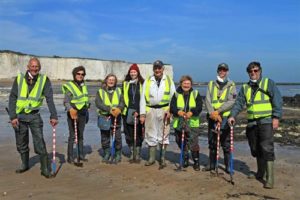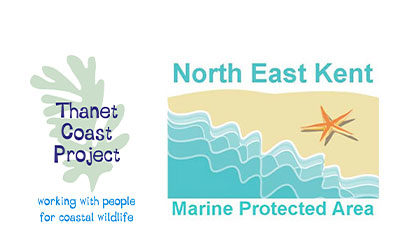Pacific Oysters in the NE Kent MPA
Protected Site
The North East Kent Marine Protected Area consists of approximately 46 km of coast between Swalecliffe and Deal and is recognised for the rare chalk habitats, animals and birds that inhabit the area.
Threat
Pacific Oysters were deliberately introduced into the UK to bolster the ailing Native Oyster fishery. Initial trials concluded that Pacific Oysters would not be able to reproduce in the UKs cold water, however, rising sea temperatures have since reached a threshold which enables reproduction.
Pacific Oysters reproduce rapidly and have since spread along the protected coastline. They smother and outcompete native species, pose a hazard to people visiting the local beaches due to their razor sharp shells and are a ‘fouling’ species impacting coastal infrastructure.
Natural England have been studying the extent and ecological impact of this species since 2007. Impact is greatest on the chalk reef and mussel beds between Birchington and Margate. Western Undercliff at Ramsgate is also affected. This population has rapidly increased and is expanding to the west threatening the condition of the intertidal mussel beds and mudflats of the National Nature Reserve at Pegwell Bay and Sandwich Bay, home to a variety of protected bird species.
What is being done?
To meet this threat, Natural England commissioned a study to trial the effectiveness of physical removal of Pacific Oysters at Western Undercliff. This trial was shown to be effective at reducing their spread. The ‘Coastbusters’ team was set up in 2011 and have since removed over 300,000 oysters from the most sensitive areas of the shore.
In 2018 a second ‘Coastbuster’ team was set up to tackle the north Kent coast under the Guardians of the Deep partnership project.

Further information:
Pacific Oyster research – NE Kent
Non native species research (NE Kent MPA)
Coastbusters Handout – Natural England, 2014 (PDF, 606KB).
If you would like to know more about the coastbuster project teams, please contact us and we will put you in touch.

